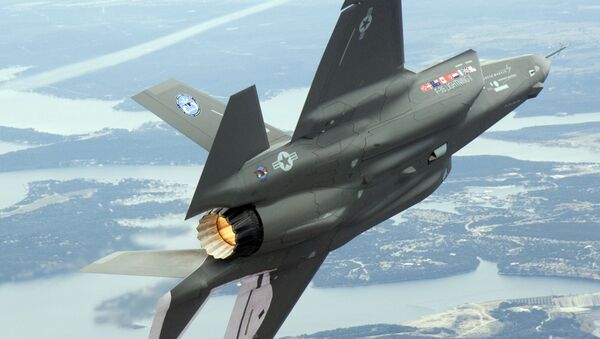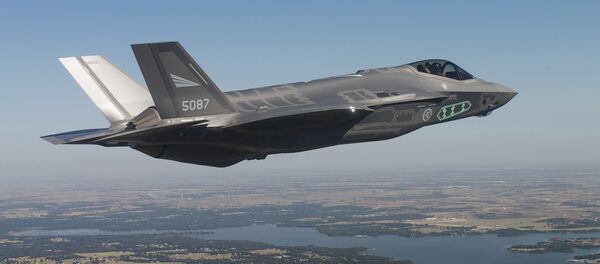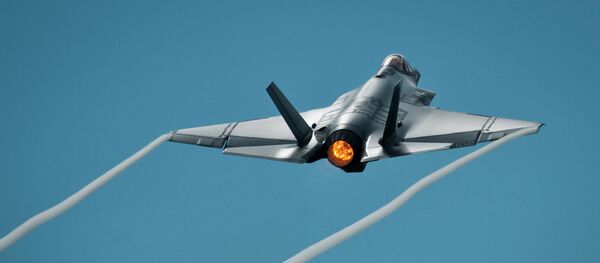Harrigian and Col. Max Marosko have authored a speculative analysis for the Mitchell Institute of Aerospace Studies detailing ways the fifth-generation fighter could offer an "advantage" on the battlefield.
Imagining a hypothetical war in 2026, the report speculates the F-35 and the F-22 as being the only fighters capable of escorting bombers through enemy radar and surface-to-air missile defense systems.
"During the initial days of the [fictional] conflict, F-35s occasionally return to their bases – only to discover several are heavily damaged from enemy missile attacks," the report characterizes.
Sophisticated computer networks on the the F-35 and F-22 give the planes greater flexibility, the report predicts, by allowing the aircraft to land in civilian airfields without the need of an air traffic control network. This, in turn, allows a fifth-generation fighter to be stationed closer to enemy territory.
Networking capabilities of the F-35 and F-22 also provide an advantage, the report claims, as the fighters can retrieve targeting information en route.
"There’s going to be a huge reliance on all that data," Marisko asserted.
While the report does not mention Beijing by name, the defenses used in the fictional scenario are only possessed by the US, Russia and China. Given that that the speculations include Australia as a waypoint, this appears to rule out Russia, as being out of range.
The report acknowledges the challenges the US Air Force still faces. For one, both the F-35 and F-22 must take part in additional training exercises to prepare for these potential scenarios.
Connectivity issues between fifth-generation fighters and their predecessors also must be dramatically improved.
All of the above projections are built upon the assumption that the state-of-the-art aircraft is, in fact, flight-ready. Lockheed Martin’s F-35 has been plagued by major problems throughout its development, ranging from software glitches to power plant and performance issues.
Most recently, production of the fighter has experienced more delays due to a faulty ejection seat. A government report found that any ejecting pilot weighing less than 136 pounds faced a high likelihood of a fatal neck injury. Pilots weighing between 136 and 165 pounds faced an "elevated level of risk."
Harrigian remains confident, however, insisting that "everybody gets better," when receiving the tactical support of an F-35.




